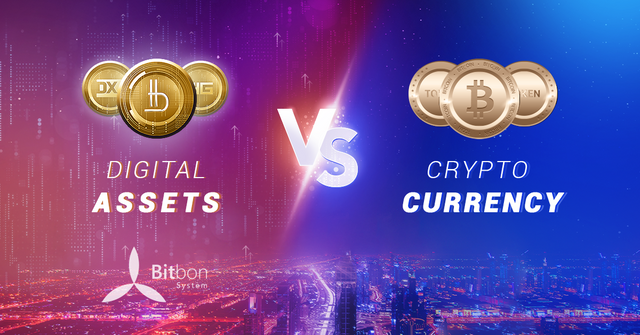Cryptoсurrency vs Digital Asset 2019

In the early stages of crypto currency development, many outstanding investors and financial experts, including Ray Dalio, founder of Bridgewater Associates — the world’s largest hedge fund, John Bogle, owner of Vanguard Group investment company, Carlo Messina, President of Intesa Sanpaolo — the largest Italian banking group, Joseph Stiglitz, Nobel laureate and economist, and Warren Buffet, a legendary investor considered a crypto currency to be a “speculative bubble” that one day can “blow off or burst”. Over the years, it became obvious that a crypto currency was unable to “stick around” in the field of digital economy for a long time because instead of real economic mechanisms it could offer only speculative trading. Today it is easy to list a number of criteria, which fully confirm the crypto currency inefficiency and vulnerability:
- absence of backing by real assets
- low reputation level associated with the illegal use of crypto currencies
- high volatility and, as a result, difficulties of predicting the price movement, which creates great obstacles to the promotion of crypto currencies in the real sector of economy
- limited scope of use
- high risk of losing hash keys to wallets and, as a result, there is no alternative to restore access to your own crypto currency
- frequent cases of fraud.
Taking into account all the above-mentioned, it becomes clear that the existing economic model requires more than just an updated mechanism. It needs a mechanism, which can provide greater opportunities.
Digital economy now offers new instruments, which have properties due to which the community offers to call them Digital Assets. By means of experimental research, it was determined that Digital Assets are based on the unique criteria and mechanisms due to which every person can define what a Digital Asset or a crypto currency is. The basic criteria include the following:
- availability of the protocol, which specifies the Digital Asset functioning and the terms and conditions of its use;
- backing by property or property rights
- digitization procedure, i.e. the creation of a unique digital copy of a real asset with the property right to it recorded in the Blockchain
- real assets are evaluated by highly qualified specialists strictly in compliance with the requirements of the country of their location and registration
- availability of mechanisms for restoring access to your Digital Assets and rights to inherit them
- the possibility of using in many activity areas
- guarantee of security and accounting of real assets for the period of existence of their unique digital copies.
This is only a small part of the unique characteristics of Digital Assets, but they also emphasize their fundamental difference from crypto currencies, as well as reveal unlimited potential for using Digital Assets in the field of digital economy.
Taking into account the existing situation, creators of various crypto currencies and tokens seek ways to minimize negative trends and increasingly call their crypto currencies and tokens “digital assets”. However, another word for these concepts will not give any existing crypto currency real properties of Digital Assets.
Thus, it is completely obvious that the Digital Asset is a new concept in the global economy, which is so necessary for the transition of the existing types of activity and relations to the qualitatively and technologically new level, due to current trends.
Crypto currency is an outgoing trend, one can even say with confidence that there will not be any crypto currencies soon. Digital Assets and platforms, which ensure their functioning, are replacing crypto currencies right now. That is why Digital Assets will become a driving force for the new digital economy.
https://www.bitbon.space/en/news/global/kriptovaliuta-ili-tcifrovoj-aktiv